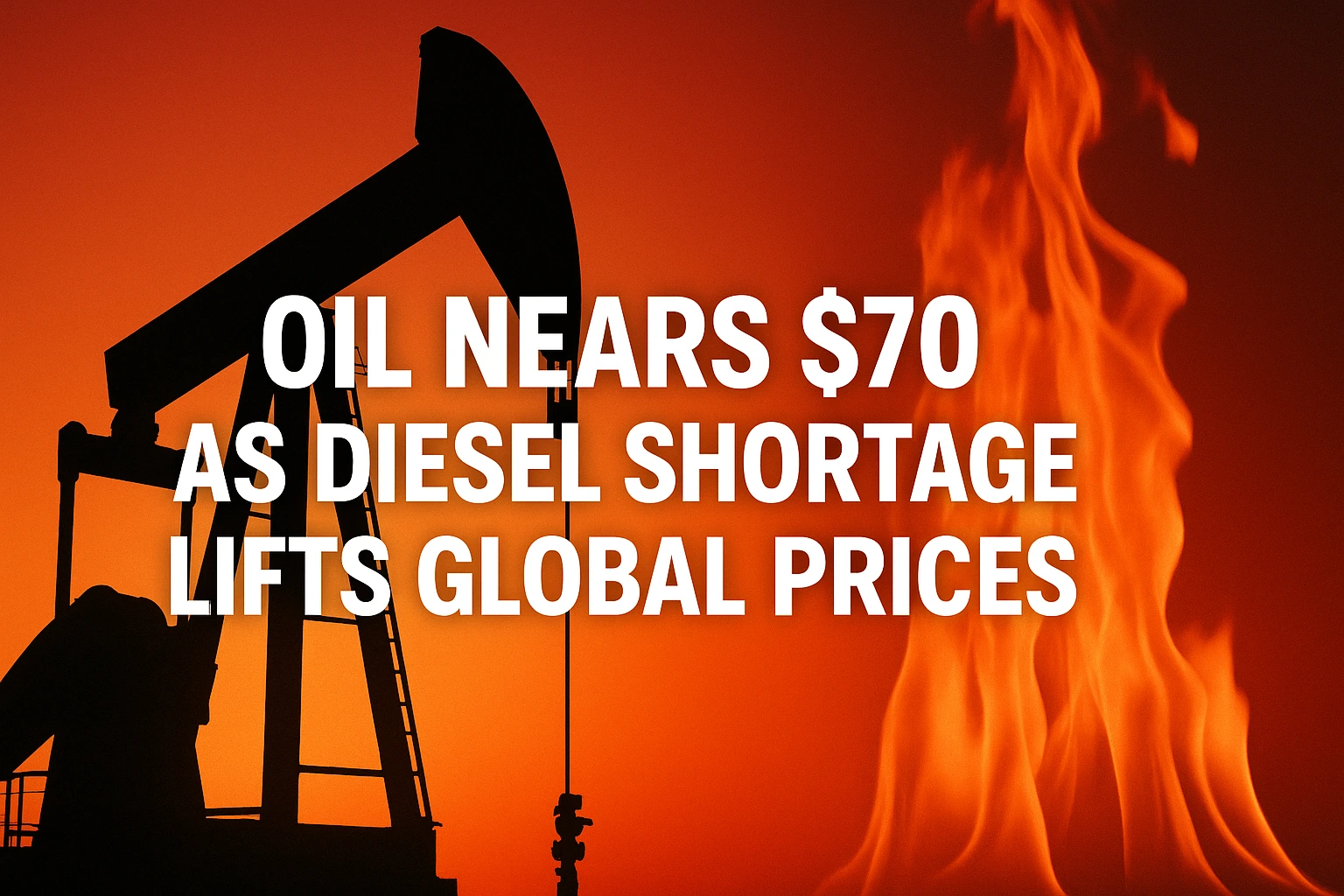Brent crude trades near $70 as tight diesel supply in the US and Europe boosts prices. Here’s what’s driving the market and how long it could last.
Table of Contents
🛢️ Oil Holds Gain With Support From Tight Diesel Market
🔑 Key Takeaways
- Brent trades near $70 after a 1.5% gain—driven by diesel demand despite rising crude stockpiles.
- Diesel tightness remains key, especially in the US and EU, keeping crude prices supported.
- Backwardation persists in crude and gasoil futures—a telltale sign of near-term tight supply.
- Geopolitical and seasonal factors: EU price caps on Russian fuel, US economic strength, Iraq outages all contribute to the tight market.
1. Diesel: The Hidden Hero Behind Crude Strength
- Diesel prices up ~17% since early June, far outpacing crude gains (7%), due to low inventories, stricter shipping emissions rules, and supply sanctions.
- European and U.S. distillate stocks remain significantly below average, powering strong diesel cracks and sustaining refinery margins well into the summer.
2. Price Trends & Market Dynamics
- Brent nears $70/b and WTI around $67/b, supported by robust seasonal demand, backwardation, and supply disruptions like the Iraqi outages.
- Despite OPEC+ increasing output, actual production has lagged, maintaining an overall tight oil market.
3. What’s Fueling This Tightness?
| Factor | Impact |
|---|---|
| Seasonal demand | Summer travel and peak refinery activity tightening markets |
| Iraq supply issues | Drone attacks halved output in Kurdistan, supporting prices |
| EU sanctions | Cap on Russian crude and fuel squeezes supply further |
| Backwardation in futures | Higher price for near-term delivery signals structural tightness |
4. Market Risks & Outlook
- Seasonal sweet spot — Summer demand keeps diesel strong, but autumn inventories and OPEC+ output hikes could ease pressure by Q4.
- Geopolitical shocks — New disruptions or sanction changes may quickly support prices.
- Macro-economic indicators — Strong US data (like recent economic readings) continues to buoy risk appetite and oil demand.
- Production vs. inventory trends — IEA warns supply surplus may mask tight products markets, cautioning against complacency .
5. Why Investors Should Watch Diesel
- Diesel tightness influences trucking, shipping, and heating costs—key signals for inflation and corporate margins.
- Crude-focused portfolios benefit from clean energy profits when backwards curves persist.
- Monitoring diesel cracks vs. crude spreads helps identify profit centers for refiners and transport stocks.
📌 Must Read
📌 Must Read = Nvidia to Restart AI Chip Sales to China After U.S. Export Reversal
📌 Must Read = Goldman Sachs Q2: $840M Trading Beat Lifts EPS to $10.91
📌 Must Read = US Probes Brazil’s Trade Practices in Section 301 Case
🎯 Conclusion
Diesel remains the unsung hero keeping crude prices steady near $70. Despite rising inventory builds and OPEC+ output, persistent backwardation and strong demand across refining hubs will anchor prices—at least through summer’s peak. Your blog will stand out by spotlighting diesel’s central role, offering both macro insight and actionable angles for savvy readers.
